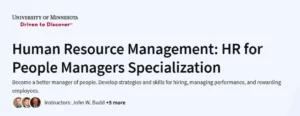What will you in Docker for the Modeling Risk and Realities Course
Build optimization models for low-uncertainty scenarios using tools like Excel Solver.
Incorporate risk into models through probability distributions and scenario analysis.
Select appropriate probability distributions based on data characteristics.
Utilize simulation techniques to evaluate decisions under uncertainty.
Apply sensitivity analysis to understand the impact of variable changes on outcomes.
Program Overview
1. Modeling Decisions in Low Uncertainty Settings
⏱ Duration: ~1 hour
Introduction to optimization models in deterministic environments.
Building algebraic models and translating them into spreadsheet models.
Utilizing Excel Solver to identify optimal decisions.
Introducing basic risk elements into models.
2. Risk and Reward: Modeling High Uncertainty Settings
⏱ Duration: ~1 hour
Understanding high-uncertainty scenarios and associated risks.
Incorporating probability distributions and correlations into models.
Conducting sensitivity analysis and exploring the efficient frontier.
3. Choosing Distributions that Fit Your Data
⏱ Duration: ~2 hours
Visualizing data to identify suitable probability distributions.
Differentiating between discrete and continuous distributions.
Performing hypothesis testing to assess goodness of fit.
4. Balancing Risk and Reward Using Simulation
⏱ Duration: ~1 hour
Implementing simulation techniques to model uncertainty.
Analyzing simulation outputs to inform decision-making.
Comparing alternative decisions based on simulation results.
Get certificate
Job Outlook
Enhances capabilities in roles requiring risk assessment and decision modeling.
Applicable to careers in finance, operations, data analysis, and strategic planning.
Provides foundational skills for positions involving quantitative analysis and forecasting.
Specification: Modeling Risk and Realities
|
FAQs
- Basic statistics and Excel knowledge is beneficial but not mandatory.
- Step-by-step instructions help beginners build models.
- Practical exercises using Excel Solver and simulation techniques.
- Introduces probability distributions and scenario analysis clearly.
- Suitable for professionals and students alike.
- Covers risk assessment in high-uncertainty environments.
- Introduces scenario planning and probability distributions.
- Teaches sensitivity analysis to test variable impacts.
- Uses simulation techniques for realistic decision evaluation.
- Provides frameworks for better risk-informed choices.
- Includes hands-on exercises using Excel Solver.
- Applies real-world business scenarios to modeling concepts.
- Focuses on actionable insights rather than abstract theory.
- Provides tools to model both low and high uncertainty cases.
- Encourages practical application alongside theoretical understanding.
- Finance professionals evaluating investment or operational risks.
- Managers making strategic decisions under uncertainty.
- Data analysts and operational researchers.
- Professionals in planning, consulting, or business development.
- Students seeking skills in quantitative analysis and forecasting.
- Builds expertise in quantitative risk modeling.
- Enhances decision-making and analytical thinking skills.
- Strengthens employability across multiple industries.
- Prepares learners for leadership roles involving risk assessment.
- Provides a certificate to demonstrate proficiency to employers.





